In a more superficial sense, we can define Web Development as the work involved in building a website on the World Wide Web (Internet) or a private network (Intranet); however, it is so much more than this oversimplified definition. Building, creating and maintaining a websitemaintaining a website involves several other undertakings that makes the process exciting.
In practice, web development is divided into two categories; front-end, and back-end development.
The front-end focuses on visual interactions, it deals with the client side of a website or web application, which is the part of the website where users interact with elements like images, animation and layouts. While the backend is about the digital infrastructure; server, databases, troubleshooting, debugging, etc. once combined the two activities are called full-stack development.
A simple way to understand the category is an illustration of the activities of a restaurant. In restaurants, the dining area where you place your order and receive your meal is on the surface, you can see it and interact with your surroundings, this is how the front end works. The backend, on the other hand, resembles the kitchen, which is where all meals are prepared, and organized. Each category employs different frameworks, and these frameworks were created to offer a standard and quicker way of building and developing a dynamic web application.
In this article, we’ll take a look at different frameworks for front-end and back-end development that are necessary for the creation of dynamic web applications.
What is a framework?
Frameworks are sets of tools in programming designed to support the development of web applications. It contains ready-made components, code snippets, templates, and database access used to facilitate web development.
As a web developer the functionality of a web application is dependent on varieties of tools and technologies, and familiarizing oneself with certain frameworks, would make work less cumbersome and faster. Knowing that you would be working with deadlines, agility is a necessary criterion, especially at a certain level of experience, and frameworks allow you to complete tasks as quickly as possible.
Importance of Using Web Development Frameworks

Ease of development

Reduces long length of code

Security

Scalability

Community
Ease of development: Frameworks contain packages and tools furnished for developers, detracting the need to write scripts from scratch. Documentations and tutorials are also made available to help beginners get started.
Reduces long length of code: Using a framework eliminates the need to write long lines of code, increasing productivity and allowing developers to finish projects fast.
Security: Frameworks are equipped with security features and methods to protect web applications from coming under malicious threats or attacks.
Scalability: For a web application to be scalable, it has to possess adequate power to handle growth. Its performance cannot be compromised and these frameworks offer an architecture that allows the website to become scalable.
Community: There are large communities and forums online where developers can be a part of, to get more information concerning the framework they’re engaging with or to get help when they are stuck with projects they need help with.
4 Frontend Frameworks
The frameworks we’ll be going over are front-end JavaScript frameworks, which are a group of JavaScript code and libraries that assist developers in performing tasks with the use of reusable code components, a universal development environment, compilers, tool sets, APIs and compilers, making it easier and faster to develop web applications.
1. Vue(Vue.JS)
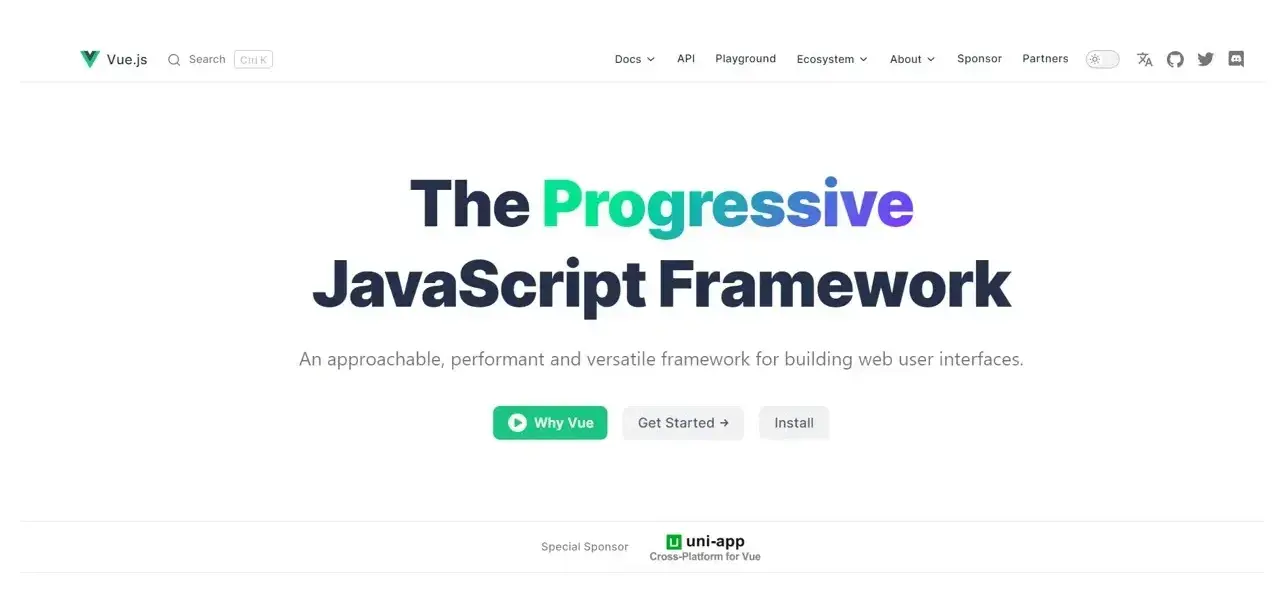
Vue is an open-source JavaScript framework primarily designed for the user interface of a web application. The framework is referred to as a progressive framework because it is being changed and modified for the creation of dynamic user interfaces and single-page applications. Working with Vue requires that you’re already familiar with HTML, CSS, and JavaScript. It’s a user-friendly framework that is easy to use and navigate.
2. Angular
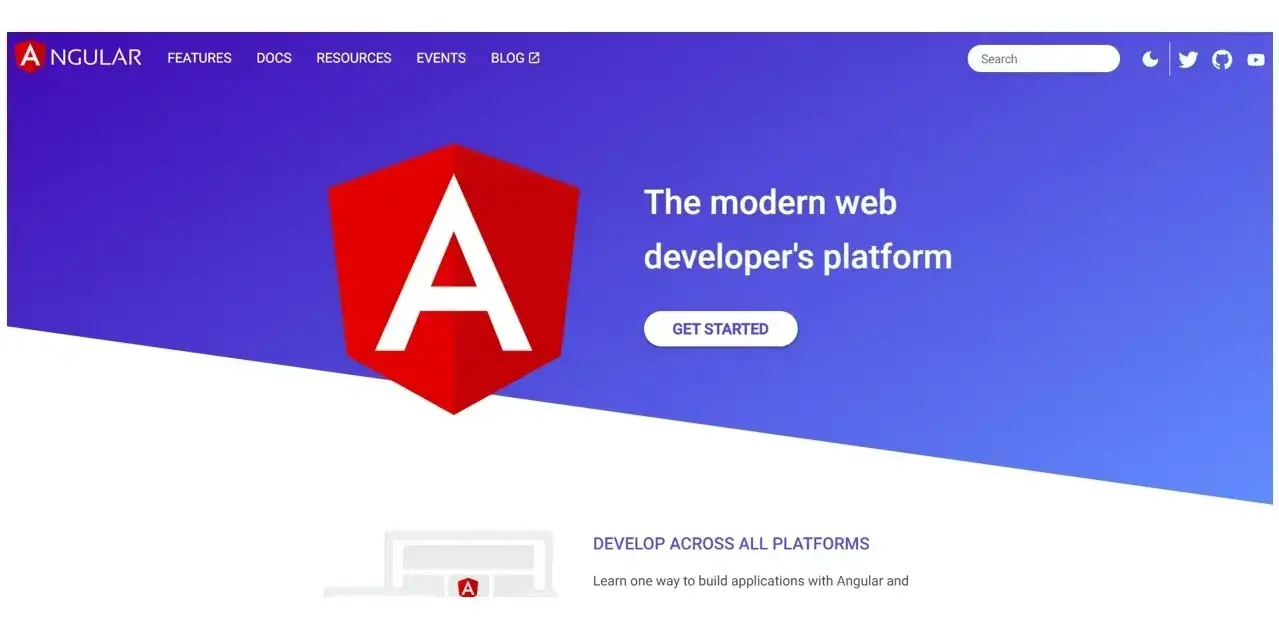
Developed for web, desktop and mobile platforms, Angular is an open-source JavaScript framework strictly written in Typescript. It’s used for single-page applications(SPAs) and it uses HTML syntax to communicate the components of an application. It consists of integrated libraries with features that enable routing, forms management, client-server communication, etc.
Angular has features that include; data binding and fast loading, a model view controller which organizes an application, cross-platform app development (it can be used on an android desktop or IOS development), simplicity, and high performance due to its speed and flexibility.
To be able to use Angular, you must have knowledge of HTML, CSS, JavaScript, the basic idea of the MVC (Model-View-Controller) architecture, and Typescript which is a superset of JavaScript.
3. React
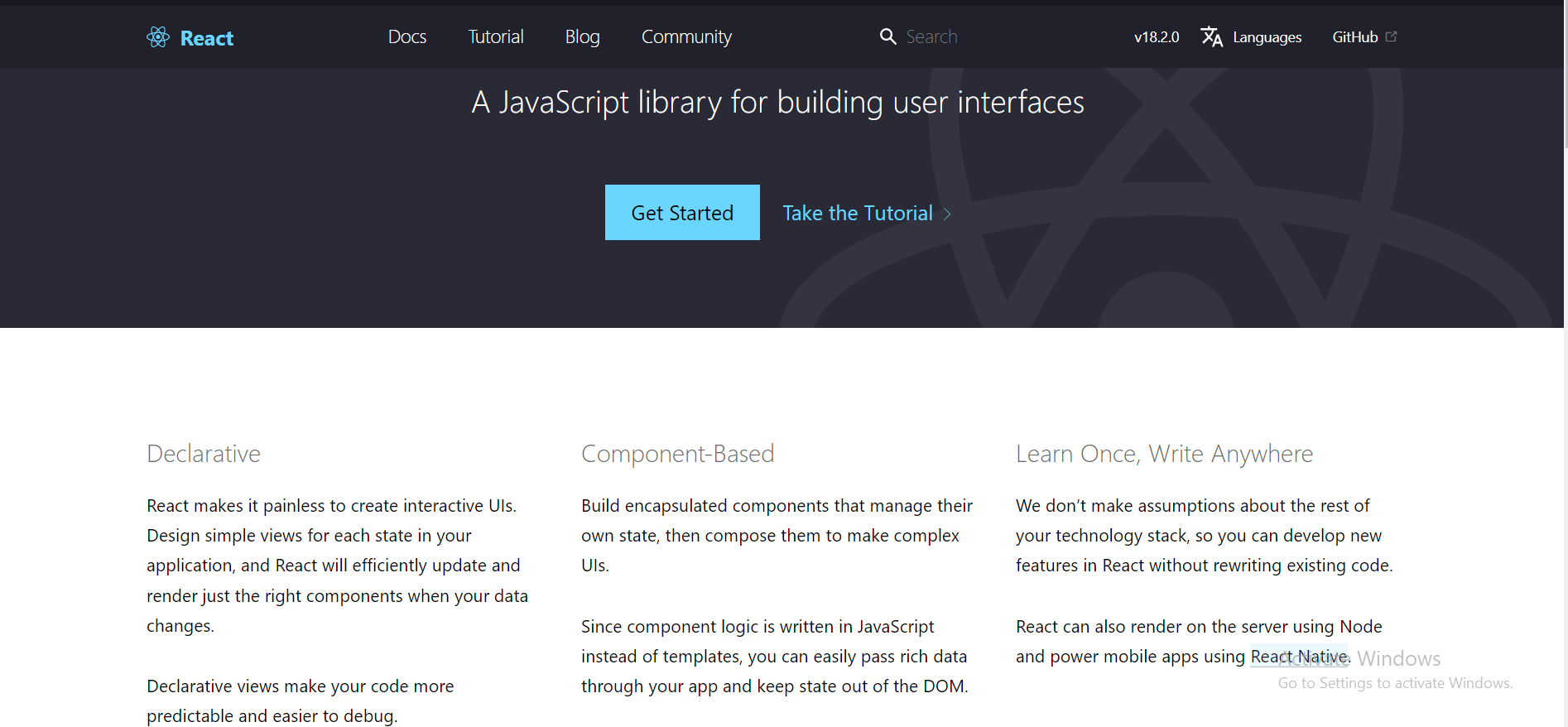
React is an open-source JavaScript library responsible for the view part of a web application. It is extremely useful in building interactive applications because of its reusable components which makes it very fast to use.
However, to begin using this framework, you should be familiar with HTML and JavaScript. If you’re familiar with other programming languages, and you understand concepts like functions, objects, classes, and arrays, you should be able to move along just fine.
With 194k stars on GitHub, React is one of the very popular frameworks used by developers in the industry worldwide.
4. Ember Js
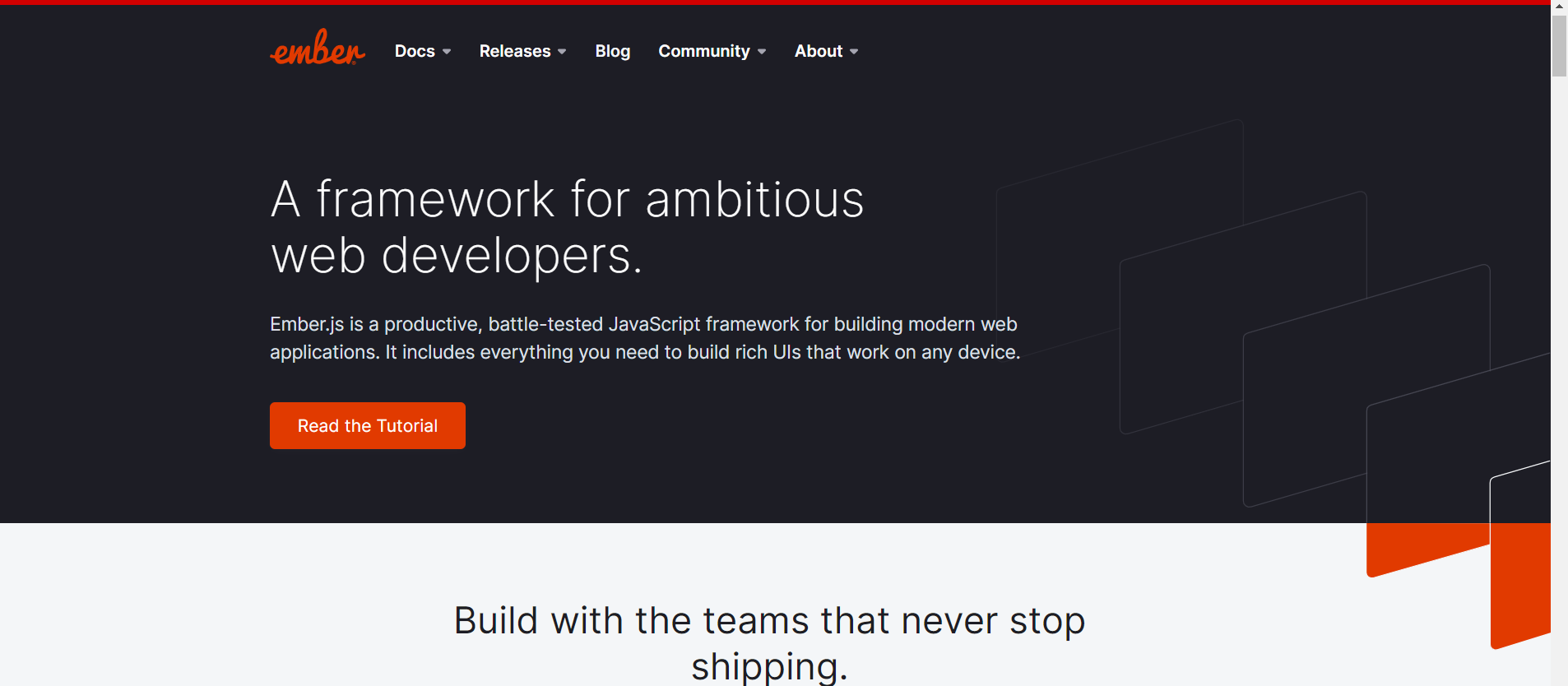
Ember is an open-source web framework built on JavaScript technologies. It is made up of two syntaxes; JavaScript and Typescript and has its own template language which is based on “Handlebars”.
Ember focuses on object-oriented programming and allows developers to utilize functional programming techniques. Ember is used for building single-page web applications, progressive web applications, and native-like web applications.
Ember is an opinionated web framework that uses a set of conventions to increase the efficiency of developers. These conventions must be learned to enable developers to move seamlessly between projects and applications to save time and energy. It is a very robust framework with rich documentation but it’s not as popular as React, Angular or Vue. It can be a bit challenging to learn because of its conventions and it’s not suitable for small-size projects.
5 Backend Frameworks
The backend frameworks we’ll be going over, focus on business logic, authentication and security authorization etc.
1. Django
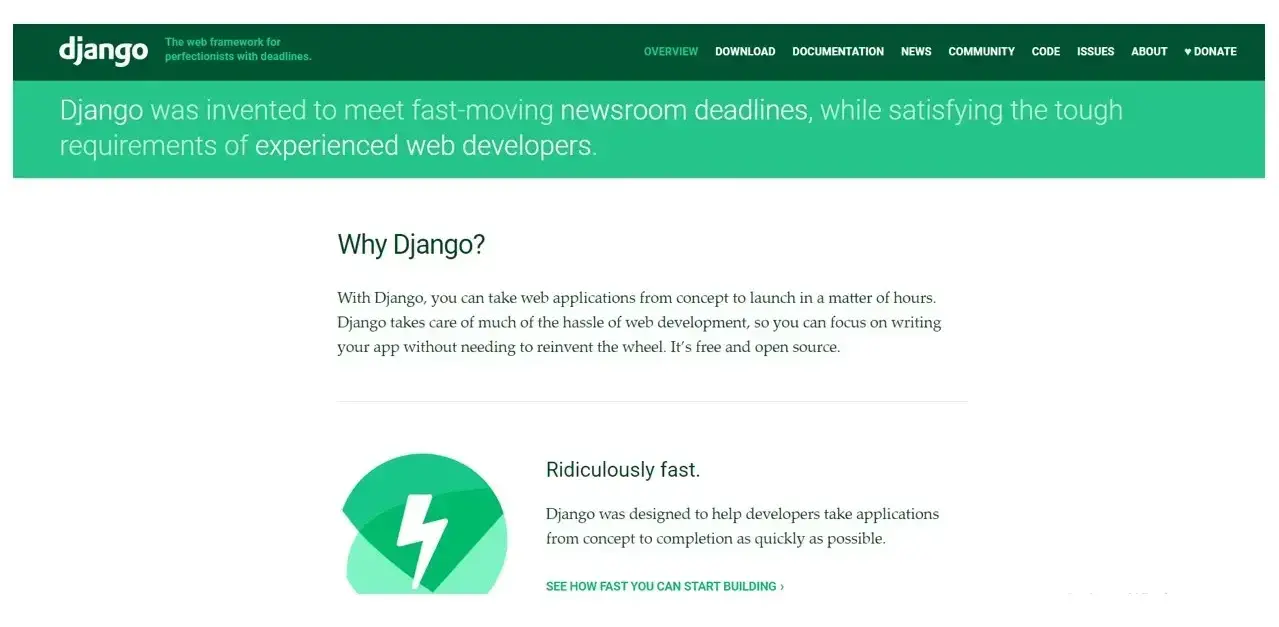
Django is a free and open-source Python-based web framework designed to help developers take applications from concepts to development.
It uses dry (don’t repeat yourself) code aimed at reducing repetition, and code duplication to decrease the repetition of patterns to avoid redundancy. It also supports the MVC pattern based on the user interface layer and supports the separation of concerns. Advantages of the MVC pattern include; rapid development, multiple views, security, etc.
2. ExpressJs
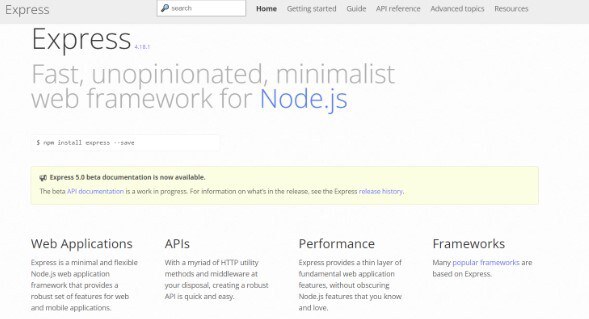
Express is a Node.js web application framework for building APIs, web applications, and cross-platform mobile apps. It is written in JavaScript and is used as a server-side scripting language providing a variety of features that makes it efficient for developers to build web and mobile applications. It manages routing, HTTP sessions, and error handling among others.
Express is a high-performance language that’s un-opinionated because there’s no structural way to write code, and you can customize it according to your need. It is easy to learn, time efficient, fast, and asynchronous which is necessary for the performance of a web application.
3. Laravel
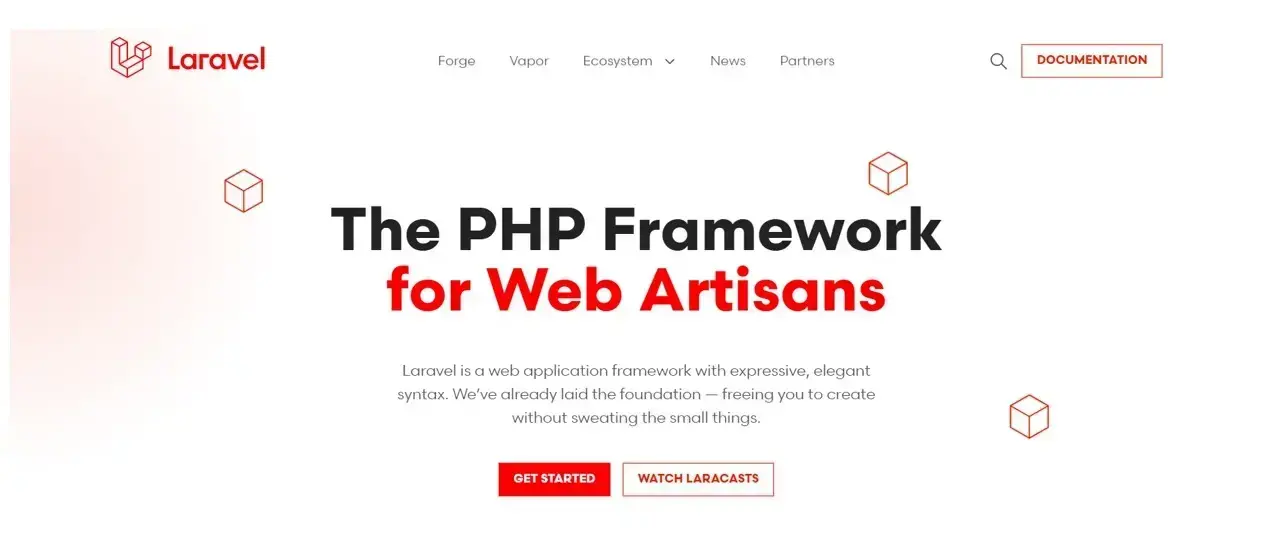
Laravel is a free open-source web framework based on PHP that follows the MVC architecture pattern. It provides developers with functions and APIs like authentication or routing to make developing web applications easier, and handling requests more efficiently. It incorporates security measures to counter hackers from injecting harmful code into the server remotely by intercepting all requests and processes and denying access to any of its components.
4. Ruby on rails
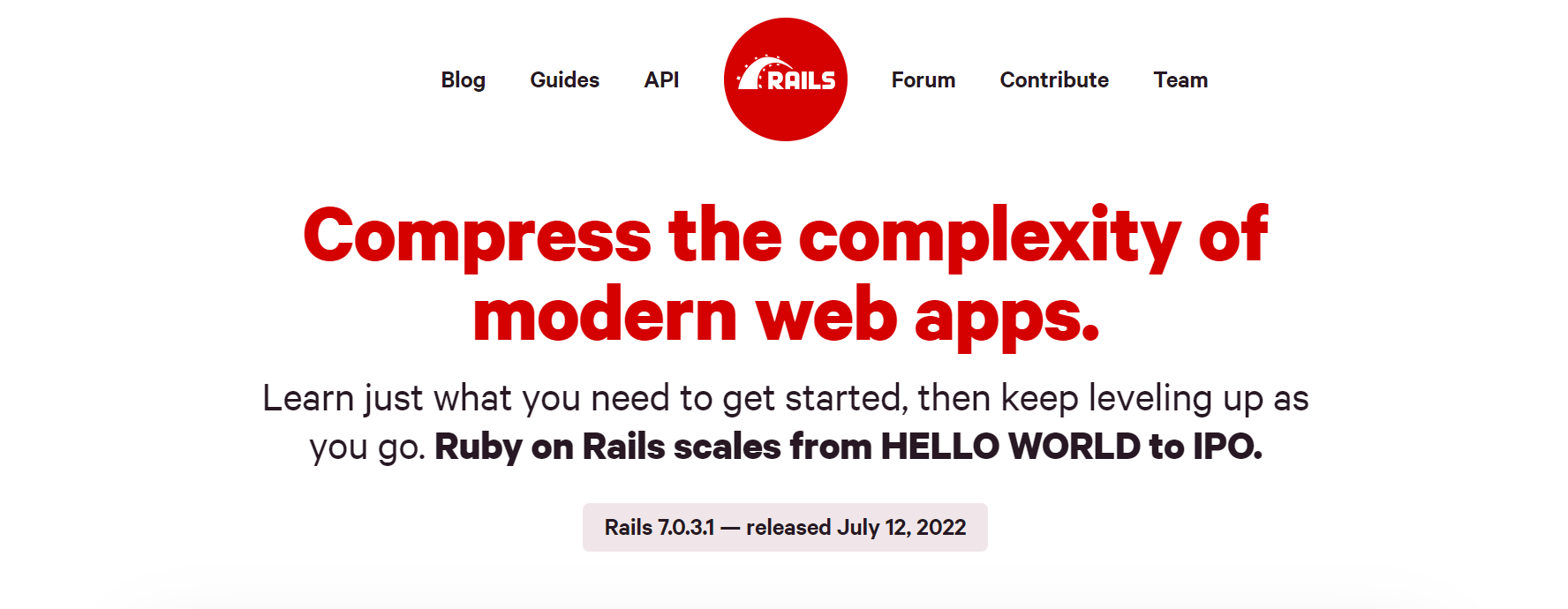
Ruby on rails is a server-based MVC framework that is used to build interactive web applications. Its MVC architecture pattern separates the application layer into model, view and control paths. The model deals with the data logic, while the view deals with UI logic, and the controller is the interface between the model and view in a web application.
Ruby on rails is written completely in the ruby language and developers can use this framework to solve problems without having to write hard code or re-invent any code. It’s fast and time-saving because there are ready-made code libraries for generating forms, tables, menus, etc. It is also cost-effective because it’s a free and open-source framework.
5. Flask
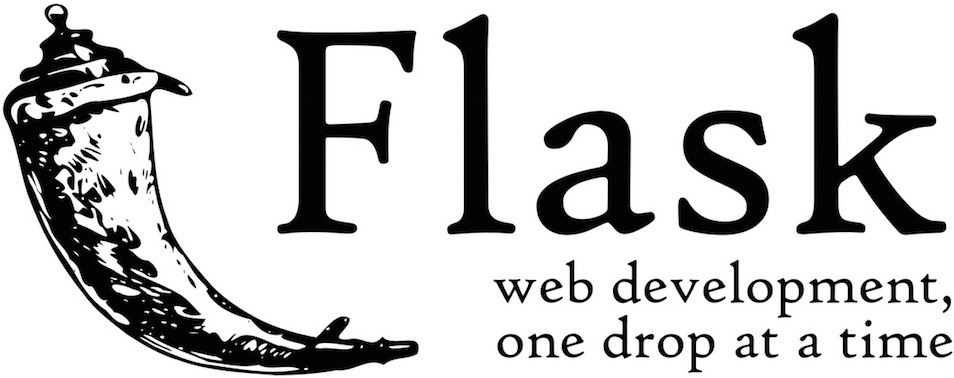
Flask is a micro web application framework written in Python used for developing fully functional projects. Developers that are familiar with the Python programming language would easily get into the flow of using this framework.
Developed by Armin Renacher who leads a group of python developers called POCO, Flask is based on WSGI concepts and Jinja 2 template engine. WSGI is the web server gateway, it’s a standard/protocol that is used to communicate from a web server to a web application while Jinja2 is a web templating system that integrates web templates with certain data sources to render dynamic pages.
Conclusion
The frameworks mentioned are advantageous and necessary for building dynamic web applications. However, you must also note that choosing a framework is dependent on the business goal, size, team, architecture, and tools.
Frequently Asked Questions
Why choose Verpex for WordPress?
As the leading CMS out there, we’ve made it our mission to offer the most comprehensive and streamlined WordPress solutions on the market. Backed by a responsive customer care team and reliable site enhancement tools, we ensure our users get the full WordPress value and support for a reasonable price.
Can I migrate my store to Verpex?
Yes; these days, it’s a fairly straightforward process to migrate your store in full. Simply get in touch with one of our service agents and they can migrate the store for you.
Is WordPress free?
All you need to do to use WordPress is to invest in a web hosting plan since the software itself is free.
What is managed hosting for WordPress?
Managed hosting for WordPress means that the hosting providers handle the management, administration, and support of the infrastructure of your WordPress website.

Jessica Agorye is a developer based in Lagos, Nigeria. A witty creative with a love for life, she is dedicated to sharing insights and inspiring others through her writing. With over 5 years of writing experience, she believes that content is king.
View all posts by Jessica Agorye



















